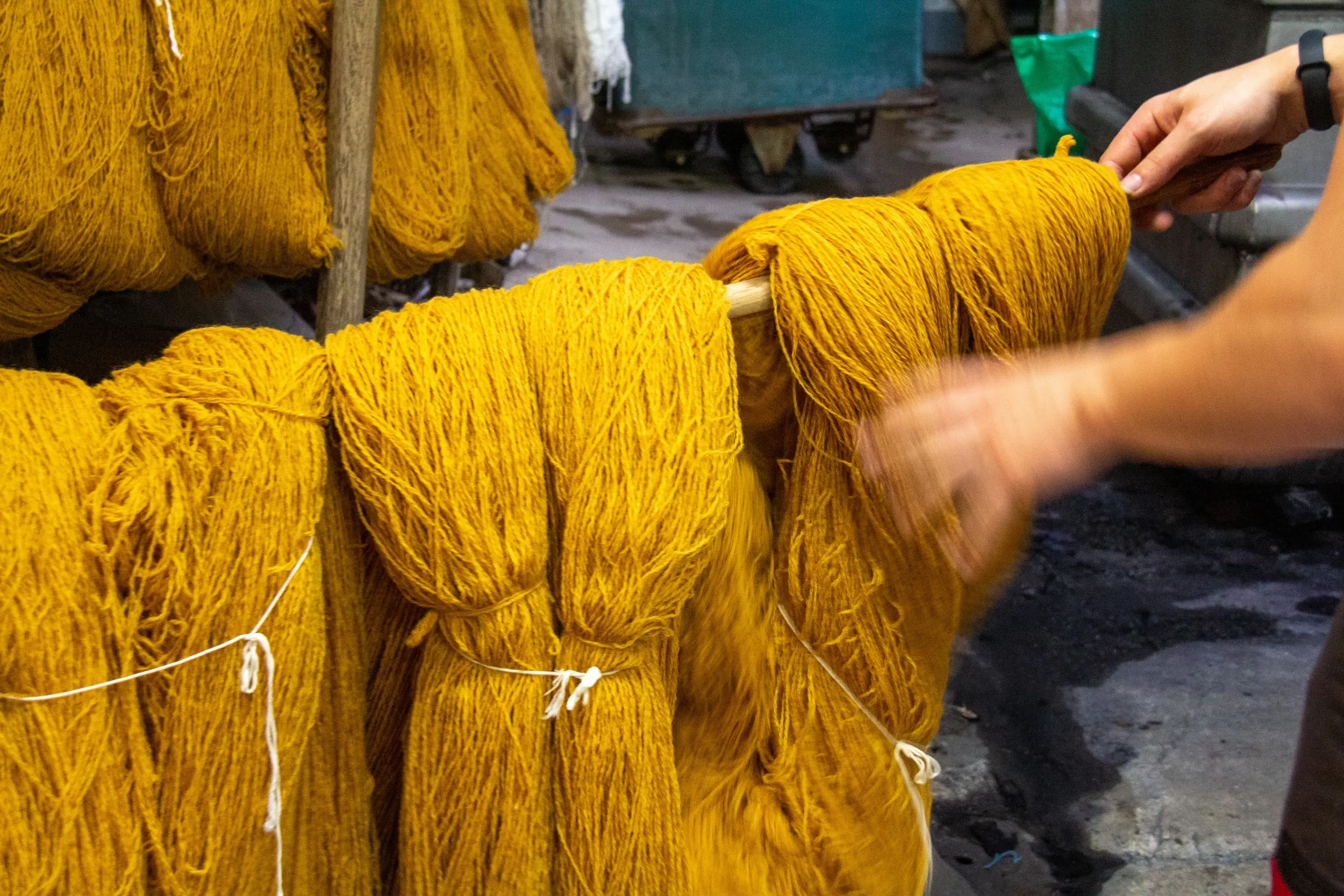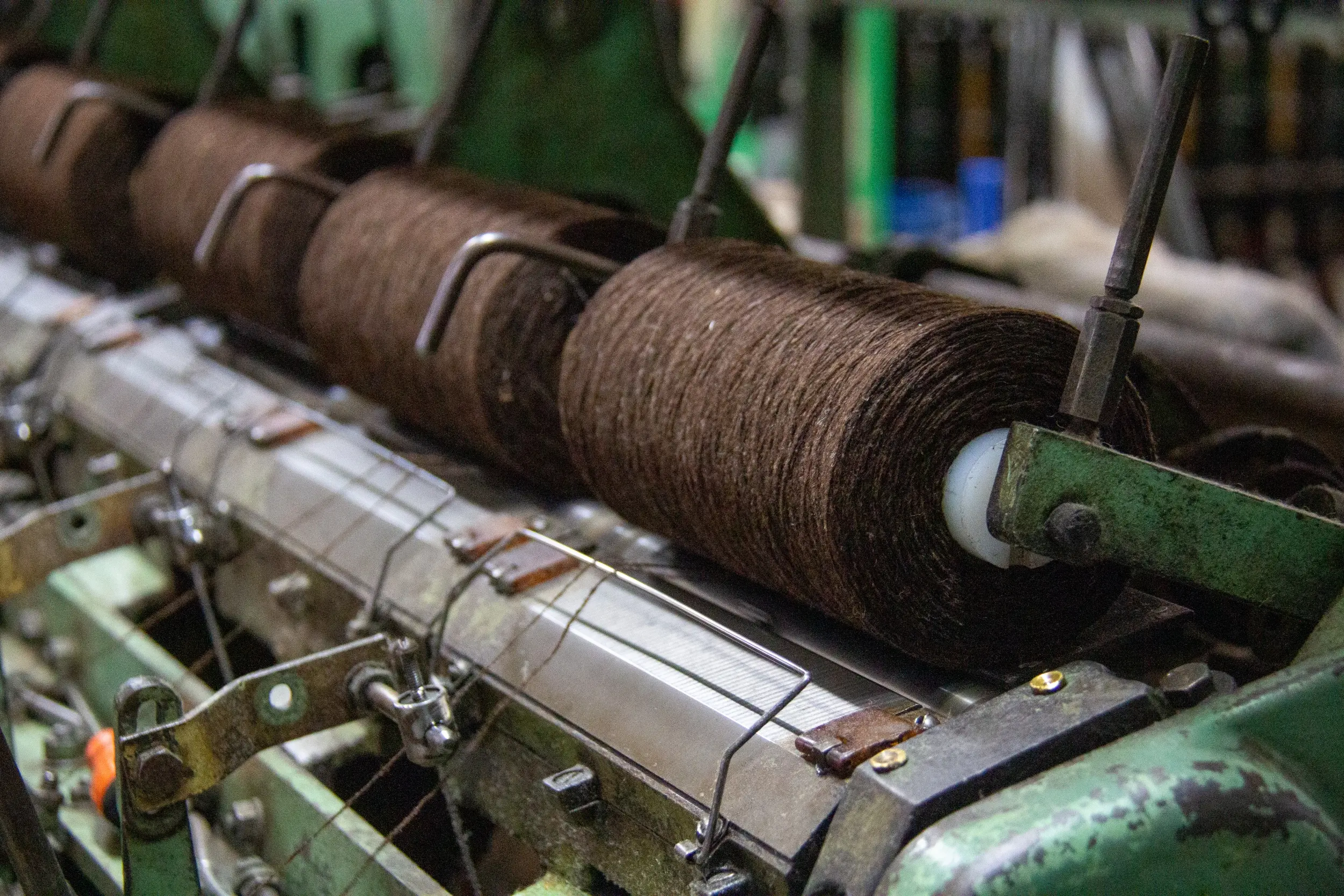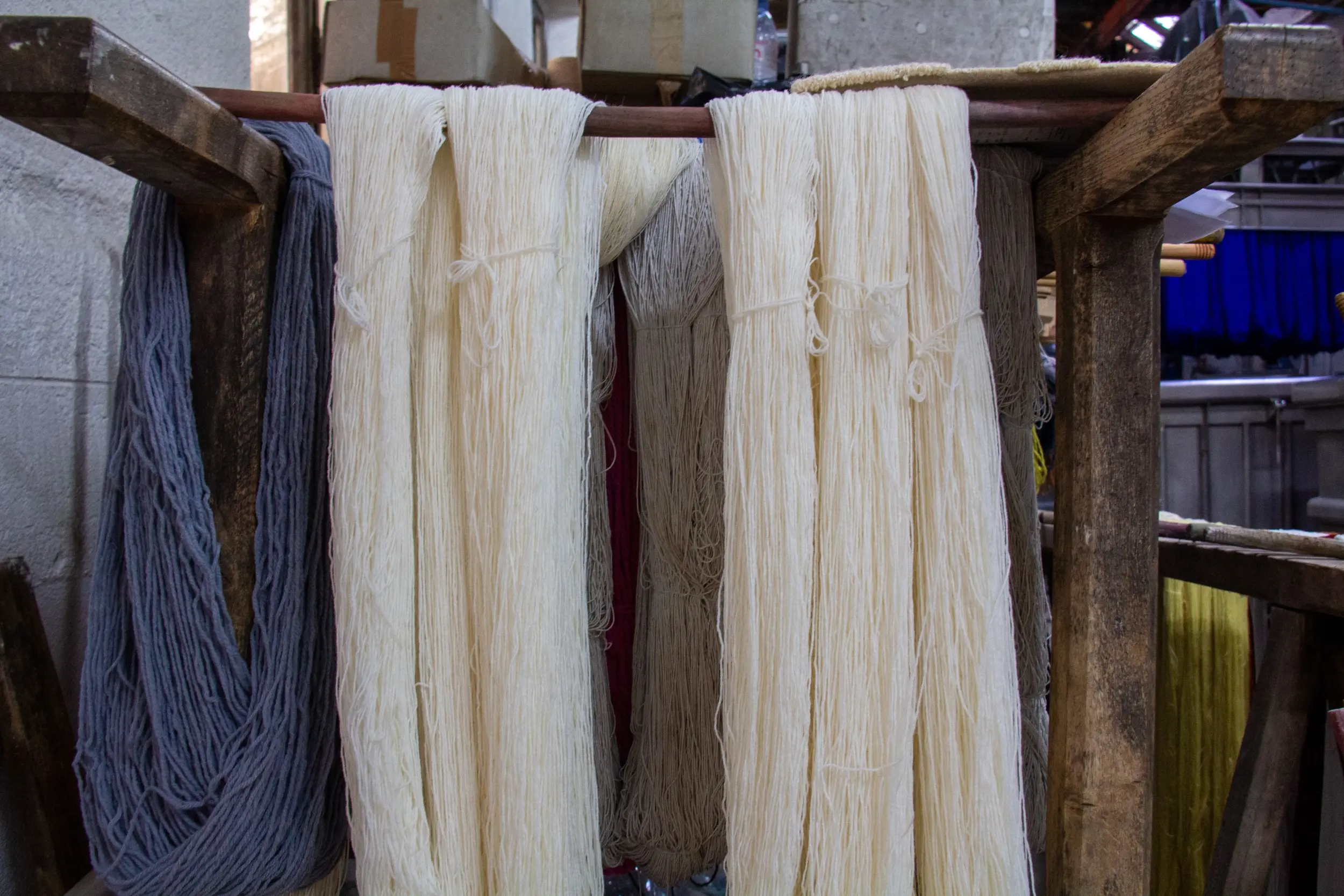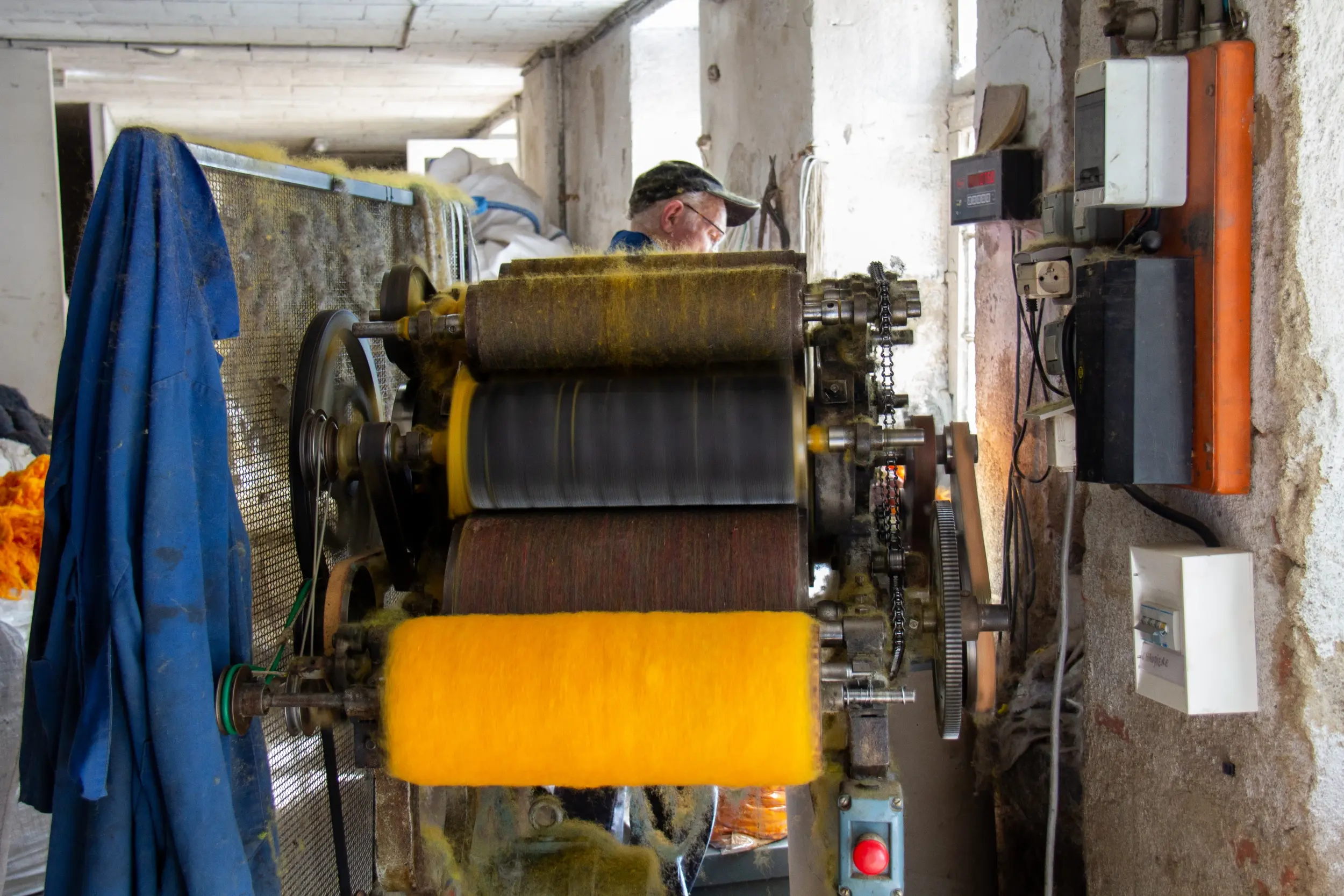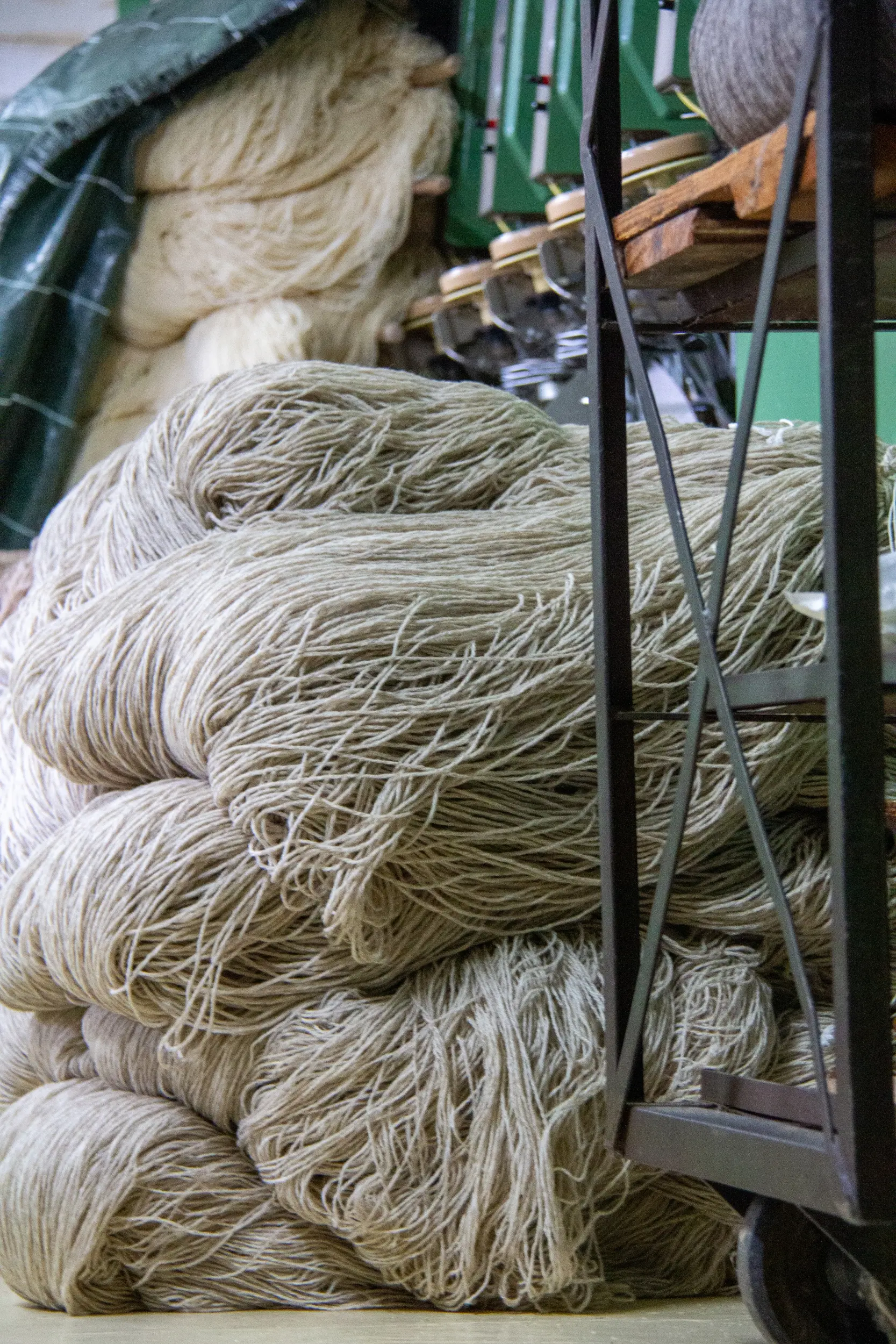Raw materials and spinning mills
Tapestry is a matter of fibers, particularly wool, a preferred material recognized for its insulating properties, flexibility, durability, and its particular suitability for dyeing.
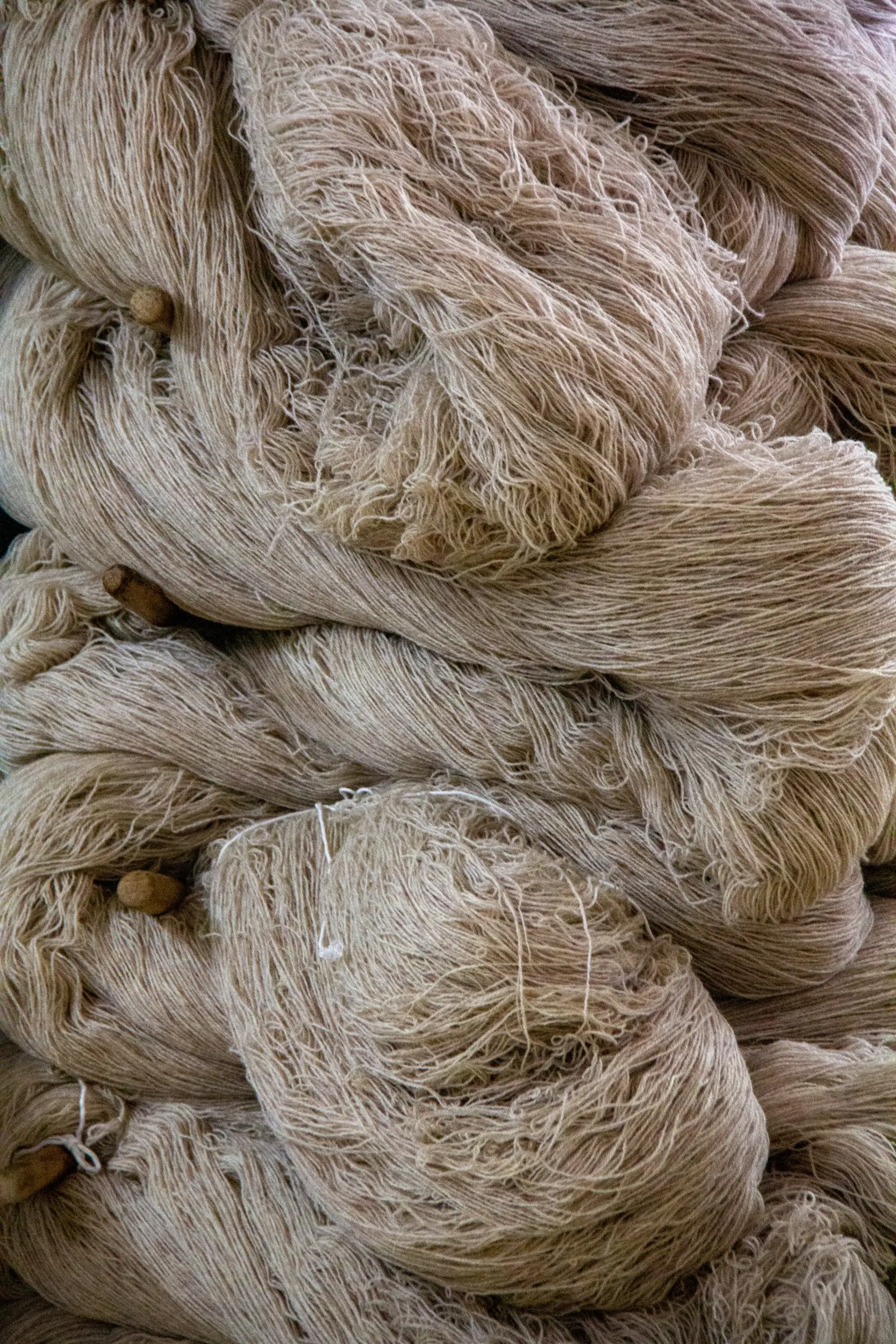
The wool
Once the sheep's fleece is sheared, the wool is sorted according to its fineness, then washed and degreased. It is first disentangled using a carding machine, which has fine steel points that help separate and parallel the wool fibers. This results in wool slivers and ribbons, which will be transformed into yarn by stretching them on spinning wheels to progressively refine them. At this stage, the yarn is not strong and can be torn easily by pulling on it. The strength of the yarn is achieved by twisting it with one or two other strands, which reinforces it and makes it more even.

The thread
Fine, quite elastic, and twisted, the yarn obtained is usually white or off-white and can then be dyed. Most of the fibers used in tapestry come from animal sources—silk and wool—or from plants—cotton, linen, bamboo. While wool and silk remain the preferred materials for tapestry, all kinds of material and usage experiments are now conceivable. The goal is to best convey the artist’s intention in their design. The only constraint remains in the use of "weavable" materials (such as stained-glass tapestries, metallic tapestries, optical fibers, etc.).

The spinning mills
Today, the Creuse region is home to two spinning mills still in operation: Fonty Spinning Mill in Rougnat and Terrade Spinning Mill in Felletin. These mills master the art of selecting the fibers best suited for weaving, to create yarn that meets the quality requirements of Aubusson tapestry. The artisanal spinning mills perfectly meet the specific needs of craft trades such as those of the weavers.

